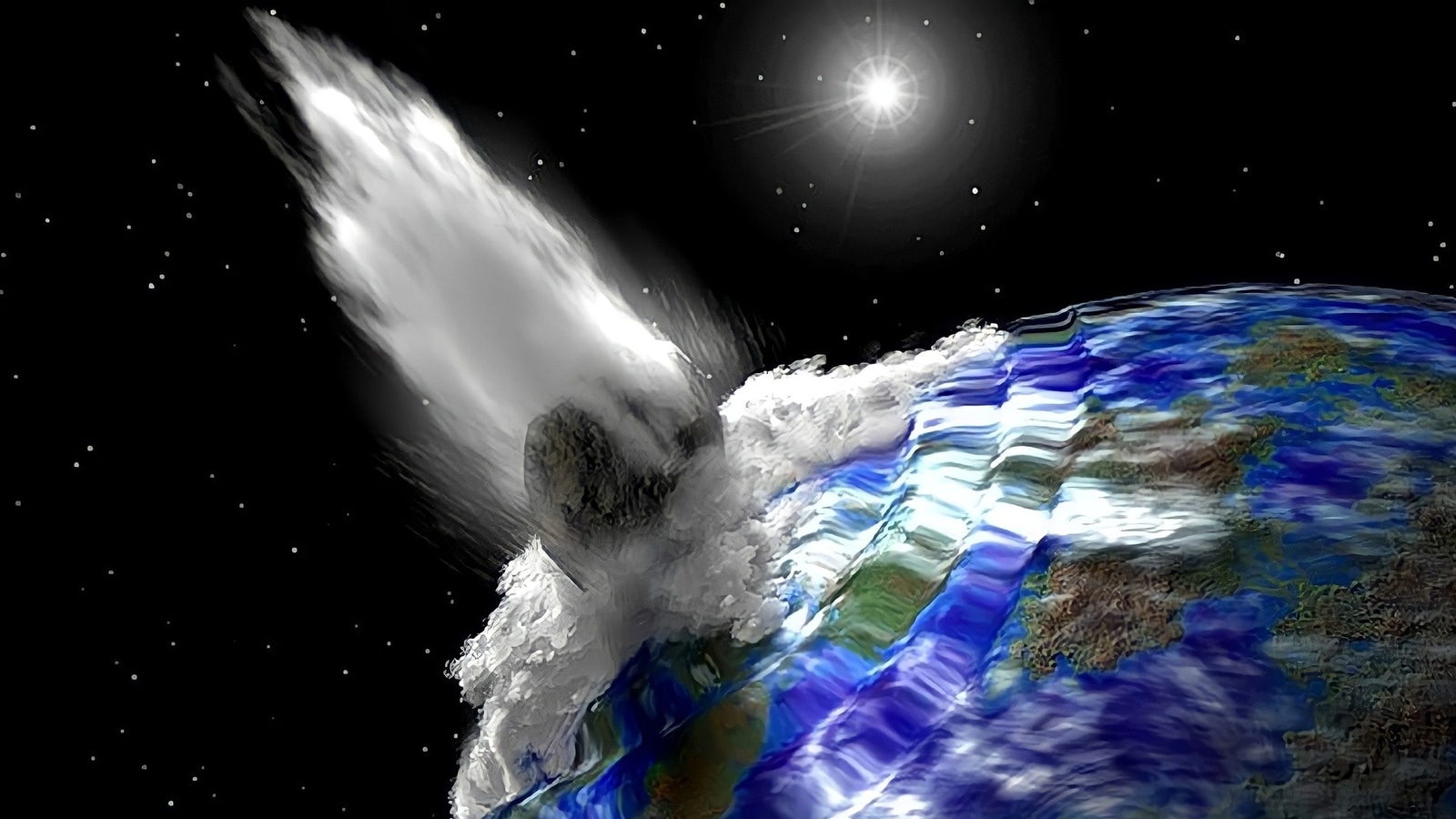A 400-feet wide gigantic asteroid is hurtling towards the Earth, says NASA
According to NASA, a large 400-feet wide asteroid will make its closest approach to the Earth on July 29, in three days’ time. Know whether it can strike the Earth and what potential damage it can cause.
Asteroid activity around the Earth has been picking up lately. Just a week ago, NASA spotted a 290-feet wide asteroid zooming past our planet. And now, an even bigger asteroid is going to make its way towards the Earth at a much closer distance. According to NASA, a 400-feet wide asteroid will be approaching the Earth in just three days’ time on July 29. For reference, it is almost double the size of the Qutub Minar situated in New Delhi, which stands tall at 239-feet. Its large size and close proximity has resulted in it being classified as a near-Earth object (NEO). The concerns are whether this asteroid can strike the planet as at its size, it can cause major destruction. So, are there any chances of an asteroid strike? Read on to find out.
According to the Jet Propulsion lab, a division of NASA, this asteroid has been named 2016 CZ31. As per the naming convention of asteroids, the four digit number represents when the asteroid was first discovered, and the two letters afterwards represent the month and the date. For reference, this asteroid was discovered on February 5, 2016. As per recent observations, this 400-feet or 122-meters wide asteroid has been predicted to fly past the Earth at a distance of 2.8 kilometers. While this may seem like a large distance, in astronomical terms, it is a minuscule number. But luckily, at the moment it appears that the asteroid will make a safe passage across the Earth.
NASA: An asteroid, almost double the size of the Qutub Minar, to approach the Earth
According to NASA Small-Body Database, the last time this asteroid came close to the earth was in 2015, and it will not come this close till 2028. The asteroid is part of the asteroid belt situated between Mars and Jupiter. At its aphelion, it goes as far as the orbit of Jupiter and during its perihelion, it comes as close as the orbit of Venus, meaning it crosses 4 planets to complete one revolution. For the asteroid enthusiasts, this is a unique opportunity to watch this asteroid, as it will not come this close to the Earth till 2110. Do note however, that you will need a powerful telescope to see this asteroid clearly.
While at the moment, it appears that the chances for an asteroid strike is minimal, things can change at a moment’s notice. That is why the Planetary Defense Coordination Office (PDCO) closely monitors all NEO asteroids for any deviation in its path that can make it a threat for Earth.
For all the latest Technology News Click Here

